National Aboriginal Veterans Day
by Steven DaviesNovember 8th is National Aboriginal Veterans Day.
National Aboriginal Veterans Day is an important day to recognize Aboriginal (Indigenous) voluntary contributions to military service, specifically in the First and Second World Wars and the Korean War. Thousands of First Peoples, Inuit, and Metis volunteered to serve national efforts in greater numbers than any other community in Canada. It’s important to make a special note and acknowledgement of the Indigenous Nations’ contributions and sacrifices during these global conflicts and also Indigenous womens’, such as Mary Greyeyes, which have been overshadowed or overlooked altogether.
- Please see the resources below for additional information and context. We look forward to continuing to work on and expanding this page.
- The beaded poppy appearing in the thumbnail by Alli Matchett (IG:@allimatchett.beadwork). Alli Matchett is a beadwork artist of Secwepwmc, Scottish and English ancestry, with roots specifically to the Tsq’escen and Simpcw
All my relations.

2In 2 playlists
Background information on this important day of remembrance and a few artists who have created work(s) to honor Veterans.
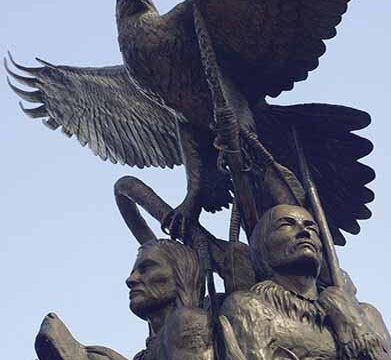
2In 2 playlists
National Aboriginal Veterans Monument in Ottawa.
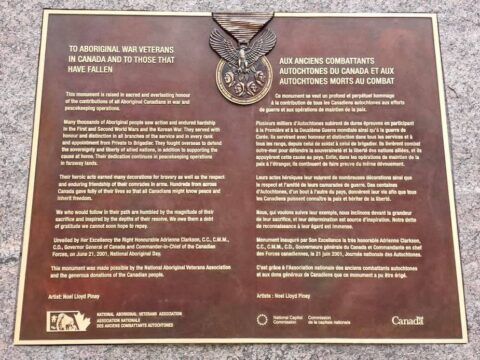
2In 2 playlists
National Monument in Ottawa inscription reads:
TO ABORIGINAL WAR VETERANS IN CANADA AND TO THOSE THAT HAVE FALLEN
This monument is raised in sacred and everlasting honour of the contributions of all Aboriginal Canadians in war and peacekeeping operations.
Many thousands of Aboriginal people saw action and endured hardship in the First and Second World Wars and the Korean War. They served with honour and distinction in all branches of the service and in every rank
and appointment from Private to Brigadier. They fought overseas to defend the sovereignty and liberty of allied nations, in addition to supporting the cause at home. Their dedication continues in peacekeeping operations
in faraway lands.
Their heroic acts earned many decorations for bravery as well as the respect and enduring friendship of their comrades in arms. Hundreds from across Canada gave fully of their lives so that all Canadians might know peace and inherit freedom.
We who would follow in their path are humbled by the magnitude of their sacrifice and inspired by the depths of their resolve. We owe them a debt of gratitude we cannot soon hope to repay.
Unveiled by Her Excellency the Right Honourable Adrienne Clarkson, C.C., C.M.M., C.D. Governor General of Canada and Commander-in-Chief of the Canadian Forces on June 21, 2001, National Aboriginal Day.
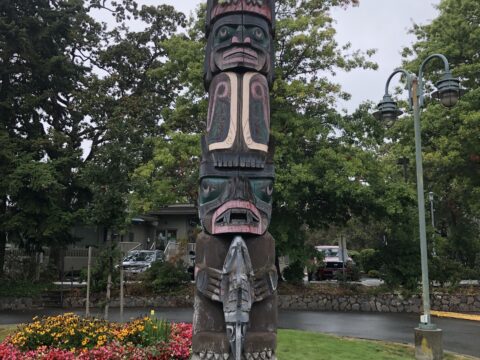
2In 2 playlists
Photo of Calvin Hunt's pole at Broadmead Care
The Tillicum and Veterans Care Society commissioned master carver Calvin Hunt to design and carve a Totem Pole for the Lodge at Broadmead in honor of the contributions and sacrifices made by Canadian Aboriginal war veterans.
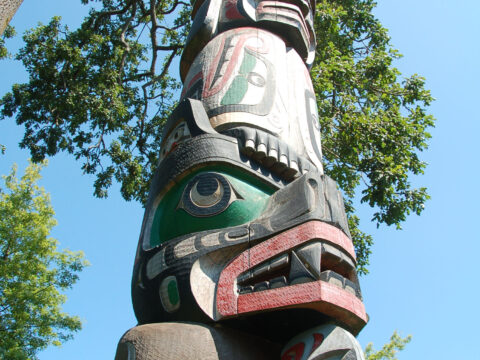
2In 2 playlists
A close up image of the pole that Calvin Hunt carved.
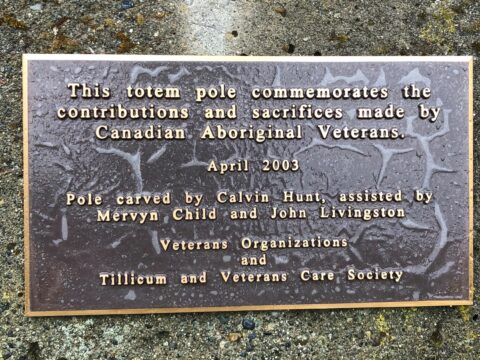
2In 2 playlists
Calvin Hunt pole plaque
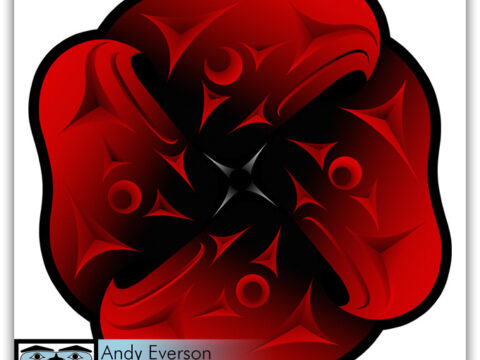
2In 2 playlists
Andy Everson ‘Remembrance’ Giclee, 2005
“November 11th is Remembrance Day, a day in which we, as Canadians, reflect upon the sacrifices made by men and women in times of war. It is these sacrifices that have ensured that we can live our lives in comparative peace. This year, 2005, has also been named the “Year of the Veteran.” When we remember the young soldiers entering battle, we must not forget those who have fallen and those who have returned, haunted and emboldened by the depths and triumphs of war. The memories of the soldier, the pilot, the nurse and the seaman must live on beyond a single day on the calendar and be cause for reflection and remembrance throughout the year.”
In “Remembrance,” I pay particular homage to the Aboriginal Veteran. While it may be known that a significant number of Aboriginal Canadians volunteered to join the military during the major wars, many do not know that they lost their Indian Status in the process. Promised pensions and housing for joining the forces, many did not receive them and, because they were no longer “Indian” under the law, they could not return to their reserves—many became poor and homeless. The tragedy lies in the fact that their battlefield comrades respected the First Nations soldiers and relied on each other in a way that only brother in arms can. When they returned home the Natives were once again relegated to their second-class status. Through four thunderbirds forged into the form of a poppy, “Remembrance” symbolizes the strength that our soldiers, our veterans and our fallen must have held for our protection. It is dedicated to all Canadian soldiers and, in particular, to my wife’s late grandfather, Thomas Clement.
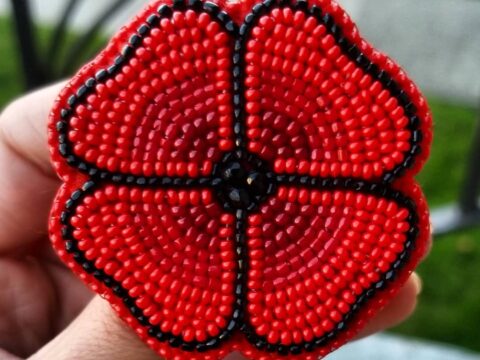
1In 1 playlists
https://www.allimatchettbeadwork.com/
